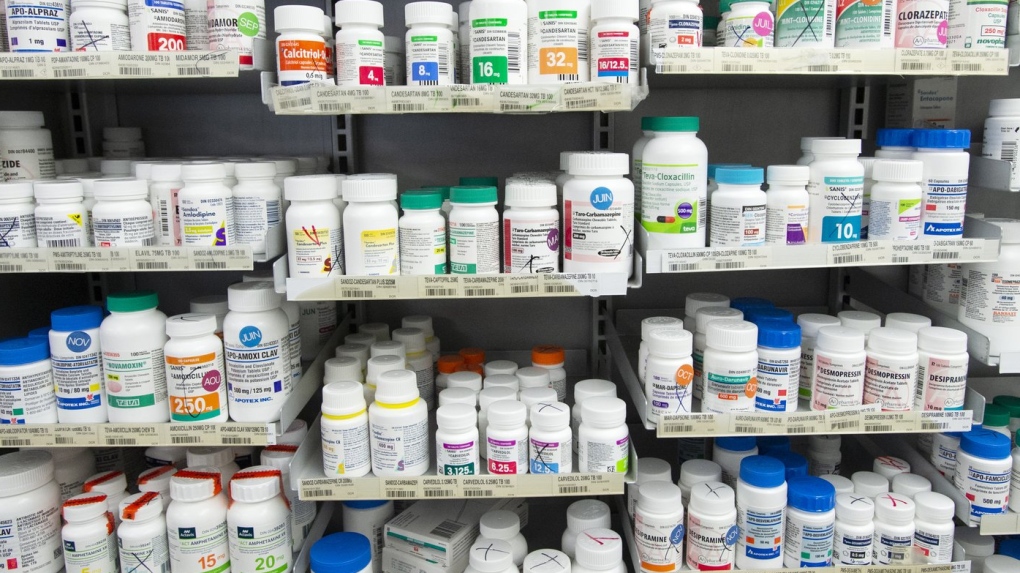The federal government is running out of time to introduce and pass a key piece of legislation in the Liberal–NDP deal.
In March 2022 the Liberals and Federal New Democrats signed a supply and confidence agreement to keep the government in power until 2025. That deal included a list of actions the government would prioritize in exchange for the NDP’s support on confidence matters.
The second priority listed in that document was to pass a Canada Pharmacare Act by the end of 2023. The House of Commons is scheduled to rise in one month’s time on Dec. 15, with the Senate scheduled to rise one week after that.
Health Minister Mark Holland acknowledged the tight timeline Wednesday, but said he still believes it is doable after many “positive” conversations.
“I do absolutely think it is possible to introduce legislation. Whether or not we can get it through all stages is another question,” he said from Winnipeg. “I think the key is to be able to have the conversations we have had manifest into something we can show Canadians.”
Canadians currently pay for their prescription drugs through a mix of public plans, private insurance and out-of-pocket spending. A report commissioned for the government in 2019 estimated that Canadians currently rely on a “confusing patchwork” of more than 100 public prescription drug plans and more than 100,000 private plans.
Speaking in Toronto Wednesday, NDP Leader Jagmeet Singh said he’s made it clear they want to see pharmacare for all Canadians, but he would not say whether New Democrats would exit their deal with the Liberals if that legislation isn’t brought forward by year’s end.
“We are still in negotiations. We are fighting hard,” he said. “Right now the sticking point is the Liberals want to bring in legislation that appeases the big pharmaceutical industry. We don’t care about them. We don’t want to appease them. We want to ensure that Canadians can afford their medication.”
 Prescription drugs are seen on shelves at a pharmacy in Montreal, Thursday, March 11, 2021.(THE CANADIAN PRESS/Ryan Remiorz)
Prescription drugs are seen on shelves at a pharmacy in Montreal, Thursday, March 11, 2021.(THE CANADIAN PRESS/Ryan Remiorz)
The Liberals presented a first draft of the bill to New Democrats earlier this fall but it was rejected. At the time, party members said it did not meet their expectations. Singh said Wednesday the NDP made it “very clear” the draft bill was “insufficient” for their support.
“The government is taking that back and working on some amendments, so we will monitor very closely the situation. We are pushing very hard,” Singh said.
It does not appear a second draft has been presented to the New Democrats yet.
Conservative Leader Pierre Poilievre has said that many Canadians will end up with worse coverage from a government plan than what they get now from employers. He has also raised concerns that a national pharmacare program will result in higher taxes.
In an October report, the parliamentary budget officer estimated a single-payer universal drug plan would cost provincial and federal governments an additional $11.2 billion in 2024-2025, rising to $13.4 billion in 2027-2028. The report found that the plan would likely result in an estimated $1.4 billion in savings on drug expenditures in 2024-2025, rising to $2.2 billion in savings in 2027-2028.
“Our report is based on a national application of the Régie de l’assurance maladie du Québec (RAMQ) drug formulary, with universal access and a standardized copayment scheme implemented by a single payer,” wrote parliamentary budget officer Yves Giroux.
The officer’s October report follows up on a costing estimate for a pharmacare plan published in 2017.
The Liberals did not incIude pharmacare in their most recent budget and it’s unclear whether any money will be included in the upcoming fall economic update.
The CEO of the Canada Health Council believes the government should continuing negotiations, but warned “we can’t wait forever.”
“We have confidence there is going to be some agreement, but let’s not rush to failure,” said Steven Staples, the national director of policy and advocacy at the Canadian Health Coalition. “Let’s take the time and make sure we get a good deal, a good arrangement for pharmacare now so that we can move forward into the future. If we make mistakes by trying to rush it, it will be much more difficult to make changes in the future.”
This looming deadline comes as a new survey from Abacus Data shows the Liberals down in the polls and support for the NDP remains relatively static.
The results, based on a national survey of 2,000 adults conducted from Nov. 9 to 12, show that if an election were held on Nov. 15, 41 per cent of committed voters would vote for the Conservatives, 28 per cent for the Bloc, 25 per cent for the Liberals, 19 per cent for the NDP, and three per cent for the Greens. The survey also showed that the Conservatives are now leading in every region of the country except for Quebec.
“We’d likely see a large conservative majority we put out some see projections earlier in the week that showed the Conservatives would win over 200 seats, the liberals could be down to under 70,” said Abacus Data CEO David Coletto.
The Conservative lead is the largest recorded since Abacus started collecting data. Coletto said his numbers show the Conservatives pulling votes from all parties, including disaffected Liberals and New Democrats.
“The Liberals at the worst they’ve ever been and the NDP are no better than they’ve been over the last three or four years,” Coletto said.
With files from the Canadian Press
